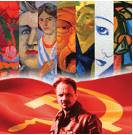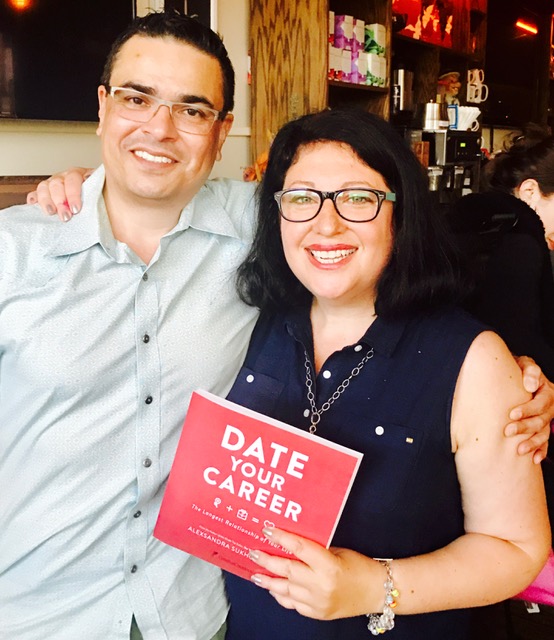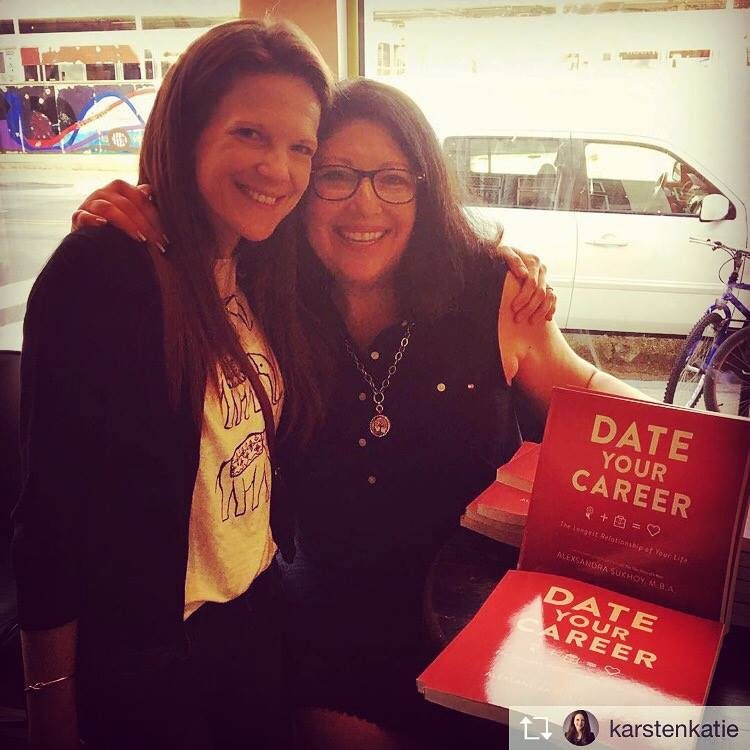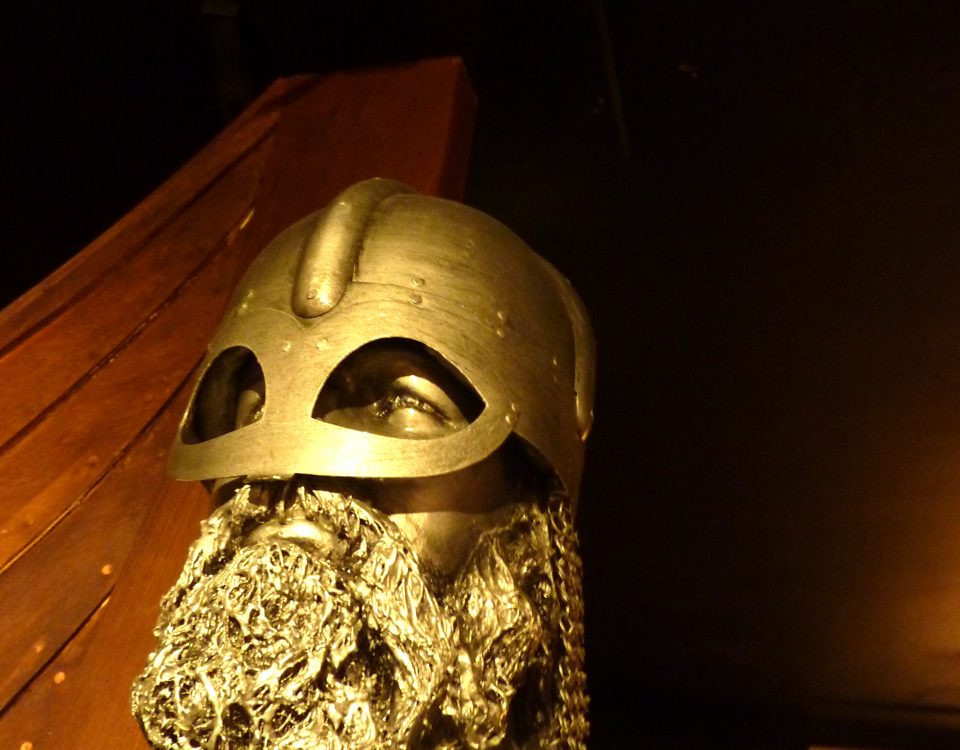- Begin Your Growth Plan Today!
- (216) 410-3825
- info@creativecadence.com
Amanda Pope and Tchavdar Georgiev: An Oasis of Creativity
| Written by Alex Sukhoy for Film Slate Magazine. |
Tuesday, 04 May 2010 23:19
Amanda Pope and Tchavdar Georgiev, writers, directors, and producers of the film festival darling “The Desert of Forbidden Art,” according to Pope, “specialize in the impossible.” Their documentary about Igor Savitsky, a Soviet era collector who not only opened the Nukus museum in the Uzbekistan desert and rescued over 40,000 pieces of Russian Avant-Garde art, but also managed to convince the Communist government to fund the very artifacts they persecuted people for during the Stalin era, has screened at numerous international film festivals to rave reviews.
Festivals include, but are not limited to, the “tremendously important debut” at the Santa Barbara International Film Festival, the Wisconsin Film Festival (drawing the film’s biggest audience yet, over 500 viewers) the Documentary Edge Film Festival New Zealand, the “extraordinarily run” Cleveland International Film Festival, Newport Beach Film Festival and three Brazilian festivals, where the film played in accurately translated Portuguese.
Additionally, scheduled for later this spring and summer, “The Desert of Forbidden Art” is to play at The Tel Aviv International Documentary Festival in Israel (home to Uzbekistani Bukhari Jews) and the Beijing International Movie Festival in China, a relevant location given China’s Silk Road, which passed through Central Asia.
The path to this success started many years ago, when Pope offered to polish a narration on a film about Albert Schweitzer. Dede Allen, the recently deceased revolutionary film editor of over thirty classics such as “Bonnie and Clyde,” “Dog Day Afternoon,” and, later “Breakfast Club” and “Wonder Boys,” motivated Pope to “learn by doing,” and this passion for film led Pope into a vibrant career as professor at the prestigious USC film school and prolific maker of such documentaries as the Dustin Hoffman narrated “Strokes Of Genius: Jackson Pollock,” and 2009’s “The Legend of Pancho Barnes and the HappyBottom Riding Club.”
A frequent collaborator with her students, Pope bonded with Georgiev, a part Ukrainian, part Bulgarian filmmaker who first was enthused to enter the industry while watching “Blade Runner” in his native country. He moved to the United States in the mid-1990s and graduated from the Art Institute of Chicago where he experienced a culture shock embracing all the art suddenly available to him. It was also where he learned how to make experimental and avant-garde films. Realizing he didn’t have a profession, and craving a more traditional film education, Georgiev applied to USC and moved to L.A., where he met Pope.
Their partnership led them to this particular project, spanning the globe and all its complicated history, politics, religion and the post-communist aftermath reflection of a time and place that, given all its complexity, should have simply swallowed creative expression instead of protecting it.
The process of making the film included many uphill battles, including securing funding, because the “art wasn’t known.” Yet they were determined, and had the generous support of the USC School of Cinematic Arts, the NEA, Center of Jewish Culture and Creativity, as well as others donors.
“That’s why we made (the film), because it could really make a difference for this museum,” Pope stated. “It could say something about cultural diversity and about recognizing local or national treasures. The whole point, the entire experience of the film, is to think, ‘Where are the cultural treasures in my country?’ And, given what one man can do be inspired to think, ‘What can I do?’”
The journey to this specific project began during the completion of another collaboration in Tashkent, as some locals directed the duo to this museum. Additionally, during their research, they came across a previously written New York Times article by Stephen Kinzer, who makes an appearance in the film.
“When Stephen was assigned to be the Central-Asian correspondent, Uzbekistan was a new country, previously closed for 70 years, Pope said. “He was a fresh new Westerner. He was on a journey to see what is there to discover when he stumbled onto the museum. He wrote the article slightly earlier (than our film), as we were searching the geo-political context. (We included him because) we didn’t just want an art historian commenting on the paintings. We looked him up on Youtube, and checked his interviews, as an Iran and Turkey expert. We had to find him and do the interview, which was challenging, but he did it. As we started to film him, the experience was so vivid. He played the role of every man. His article (which first put Savitsky’s museum on the map) brought the opposite (of Kinzer’s intended) reaction. The article did not bring (positive) attention. It brought art sharks.”
Given the extremely delicate future of the Nukus museum, due to limited funding and the expanding religious extremism of the area, Pope and Georgiev have already achieved more than one coup d’état that, hopefully, will help preserve and display the brilliant art featured in the film, such as works by the innovative Natalia Goncharova and by Yevgeny Lysenko, painter of the controversial and haunting “Fascism is Advancing.”
Pope and Georgiev have set up a fundraising for a book that will showcase the paintings and other artifacts. The $100,000 goal is slowly being met and, also, reprioritized as the film’s global presence continues to grow. PBS’s prestigious Independent Lens just invited “The Desert of Forbidden Art” to be included as part of its series, but this also means intense paperwork, numerous deliverables and a twenty-eight minute film length reduction.
In addition to the book, Pope and Georgiev, via the Cleveland International Film Festival, have arranged a partnership between the Nukus Museum and The Cleveland Museum of Art, providing the first truly global stage to one of the most poignant collections much of the world is yet to witness.
Perhaps the great success of “The Desert of Forbidden Art” is rooted in the collaboration itself. Pope, a successful documentarian with an eye for art and artists, came together with Goergiev, a Soviet born film maker for whom the art itself served as an incredible muse.
“I find it fascinating that I learned about the oppression of the Soviet Union and, specifically, its oppression of the Russian Avant-Garde, in the United States,” Goergiev said. “This was an intriguing discovery, (learning about) people who stood up to the regime. I wondered what the people were like in real life. The interviews with the children (of the featured artists) were so precious, because these folks weren’t going to be around forever. In fact, one of the witnesses recently died.”
Having Georgiev as part of the team also assured the film of having the best Russian to English translation possible. This translation, and this story, then attracted the high-caliber voice-over of talents Sir Ben Kingsley, Sally Field, and Ed Asner. They narrate the story with a compassionate tone that resonates with the global audience.
“There are no more generous people in the world than actors who use their celebrity to support worldly causes,” Pope said. “Sally Field was first to step up. I taught her son at USC, whom I called and Sally was just amazing. Ed Asner is also known for being a generous supporter and had done this incredible radio piece, (Isaac) Babel’s ‘How It WasDone in Odessa,’ where he was able to impersonate five or six different Russian characters. Sir Ben Kingsley is an art collector, once played the Russian composer Shostakovich, which resonated, since Shostakovich was also oppressed (for his craft). Kingsley was difficult to reach because of all (his commitments), so we recorded him remotely.”
When asked about their favorite roles in the making of this film, Pope includes “directing and the process of working with the subject, getting the images on film and sitting with Tchavi in the editing room.” Chimes in Goergiev, “I don’t like editing professionally as I have to sit all day. I like getting out in the real world and meeting people. The real world is what I cherish most. (For this specific film) I enjoyed undigging things in the archives, in people’s histories and even discovering a KGB file of the full image of (a partial painting that no one at the museum had ever seen in its entirety).”
A seven-year labor of love, “The Desert of Forbidden Art” continues to navigate the global film festival circuit, while the filmmakers are onto their next projects. Pope’s film “The Legend of Pancho Barnes and the Happy Bottom Riding Club” has already played on 100 American Public Television stations. Georgiev is developing several projects as a producer, ranging from “a National Geographic piece on space to a feature film about the story of a German king who lived in a small European country during WWII and who was able to outwit Hitler, but paid with his life.”
Finally, when asked about advice to aspiring filmmakers, Georgiev offers the following wisdom: “It’s really important to explore different journeys (even though) the industry is very streamlined and people get easily branded. (While) it’s difficult to get out of the mold, explore the subject you’re really interested in and think about how each step effects your career.”
Pope agrees, saying, “It makes sense to work in both genres (documentary and feature) and future filmmakers should make every effort to be flexible, to be ready and work in whatever genre presents itself. Your creativity needs to be exercised, just like your body. In the film profession, be open and alert to unexpected good fortune. This happens all the time. The foundation of filmmaking is built on fortunate timing. This film is a living example of extraordinary timing.”
Additional information about the film, including its festival schedule, can be viewed at The Desert of Forbidden Art.
|






